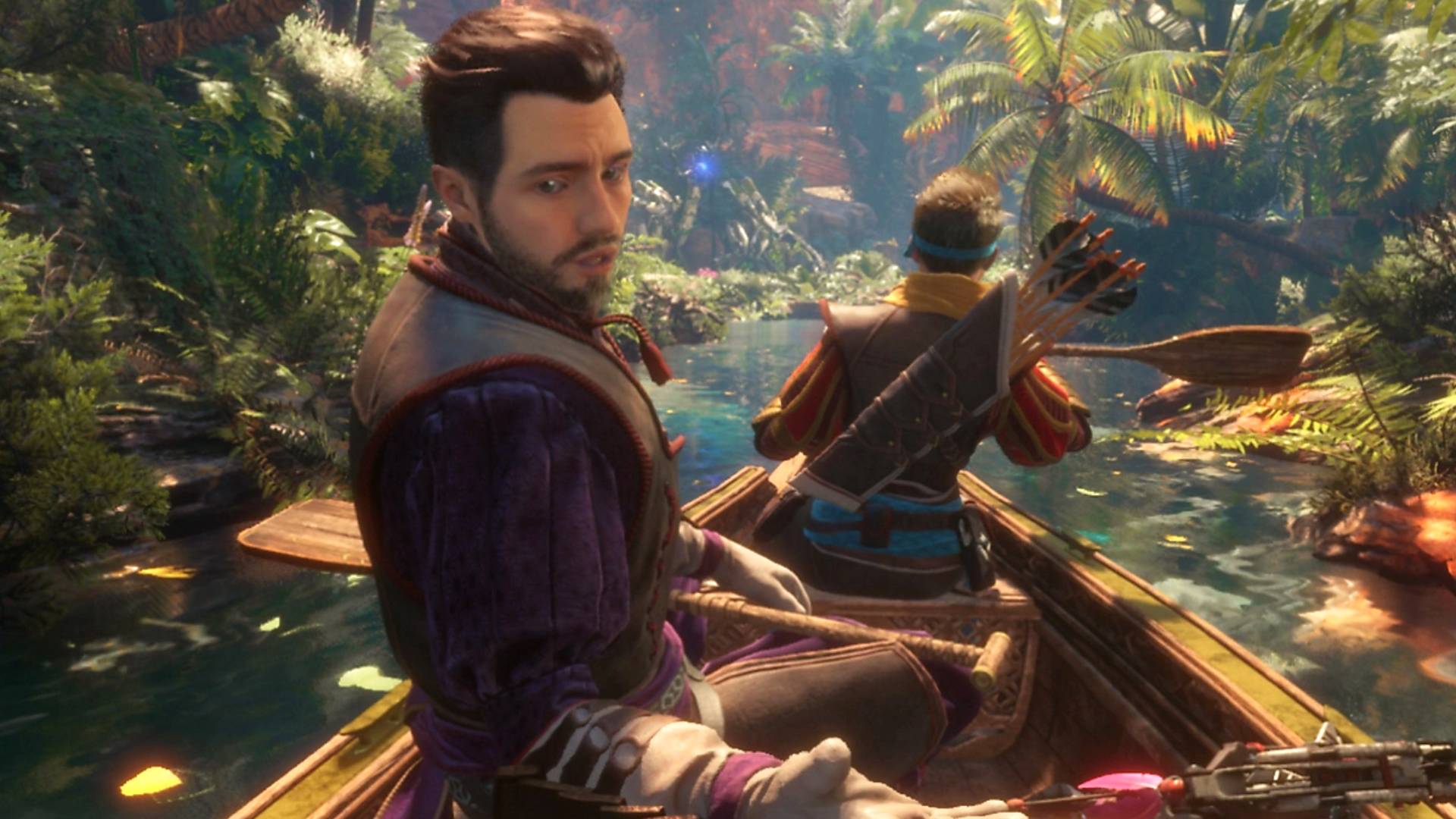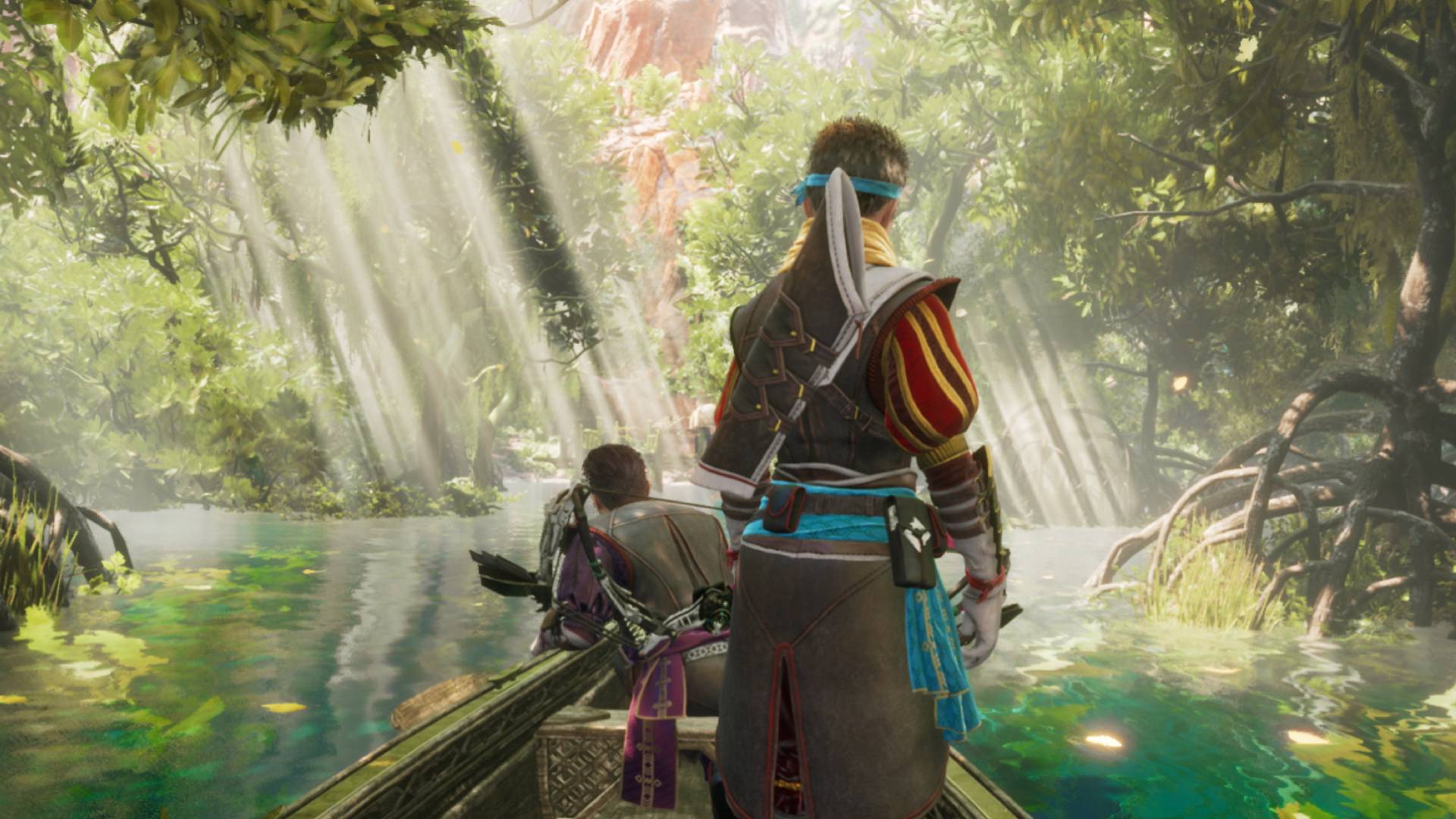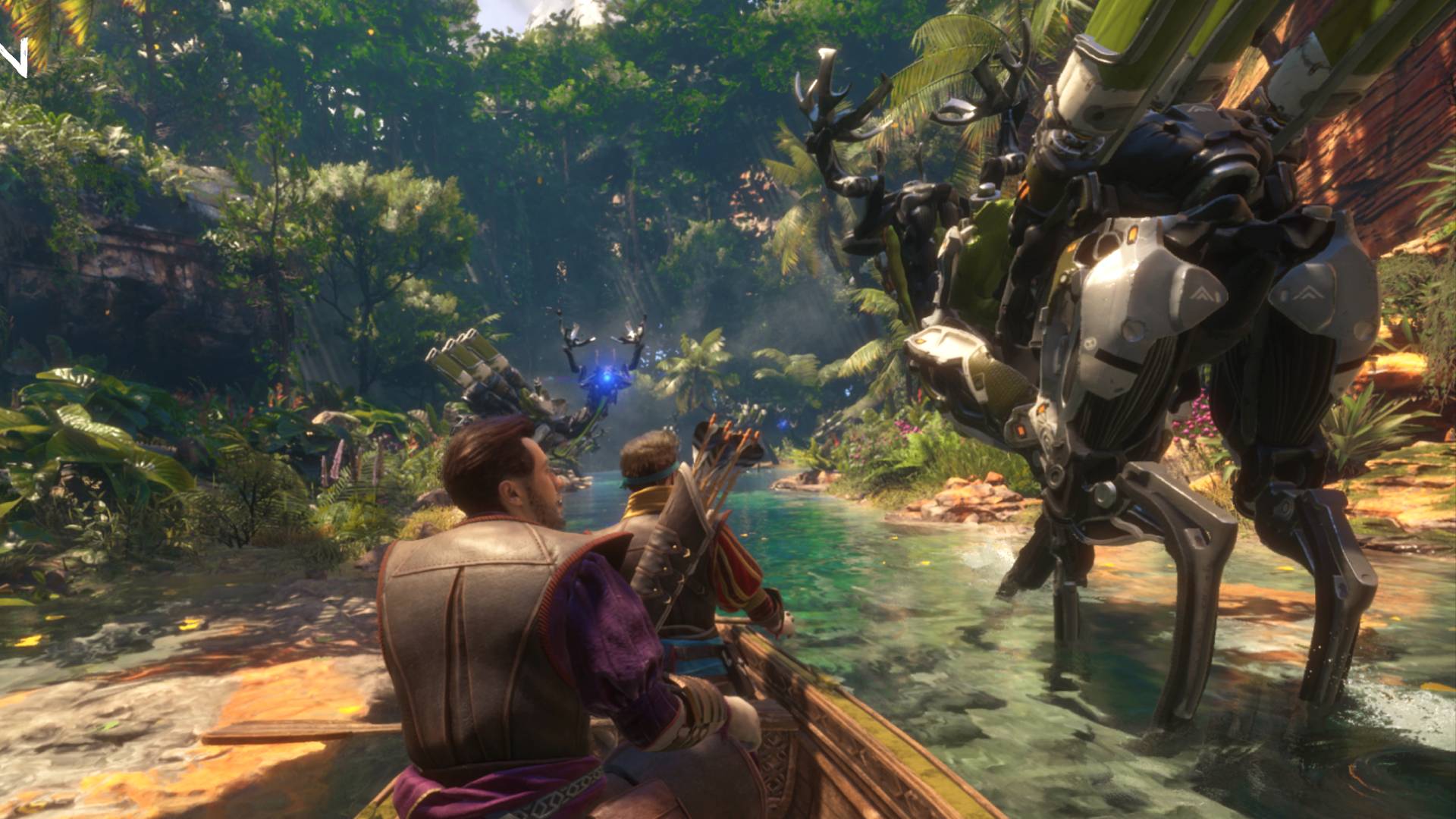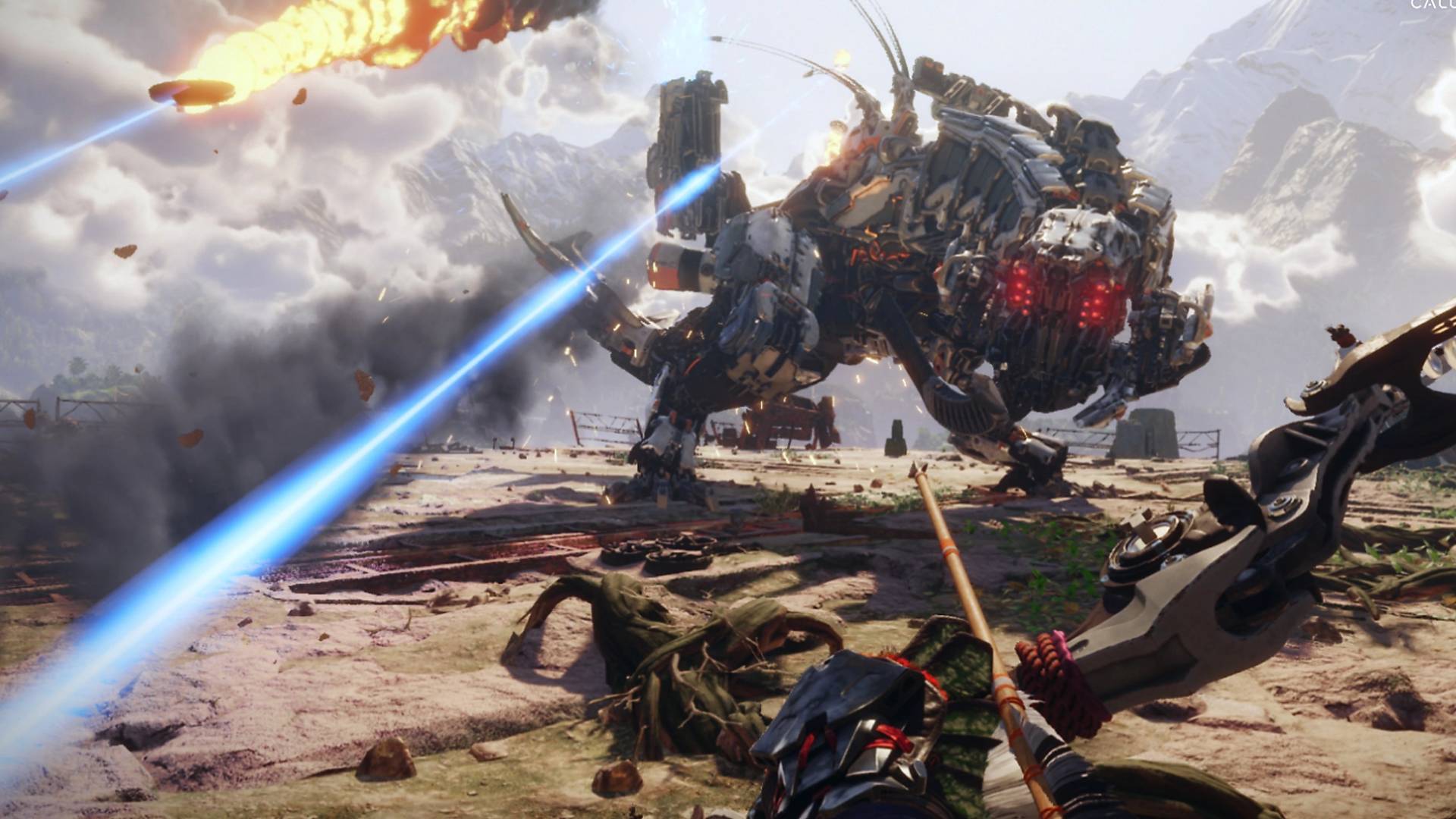'It gets creepy' if you stare at the characters in the Horizon PSVR 2 game
Would you look at that

I’m drifting down a river in a luscious virtual world, well aware that I’m in a land full of marvelous mechanical creatures, but a minor moment transfixes me: my captor is making eye contact with me.
I don’t mean looking at me, in my direction, but looking into my eyes. Thanks to the eye-tracking in the PS5's PSVR 2, the characters in the world of Horizon Call of the Mountain know exactly where to look. They also glance down when I move my handcuffed hands, they look at each other when one of them speaks. These are all such small interactions, but they root me in the world.
“We put a lot of psychology into how it feels to be watched by another character because it's intense,” Guerrilla Games’ studio director Jan Bart van Beek tells me. It “gets creepy after a while” if characters just stare into your eyes, which is why they’ll “switch between looking at your eyes and mouth and look at your hands when you move them”. They’ll even “glance away” if you stare at them too long, as though you had made them uncomfortable.
When my guards uncuff me, I’m free to trail my hand in the water, and see the wake left by fingers, hear the noise of the broken surface. I feel a slight buzz in the controller, giving a sense of the drag pushing on my hand. “The physicality changes everything,” van Beek says. “The immersion of the headset and the haptics give an extra sensory boost”.
This mimicking of reality makes what I see in the boat so much more believable, which is vital when I start seeing things I’ve never seen before.

As the canoe drifts downstream, between banks bursting with tropical green foliage, hemmed in by tall cliffs, and passing the occasional waterfall, I begin to hear the sounds of Horizon’s wildlife. Then, in a flourish, out of the bushes and from between the trees comes a pack of the one-eyed Watchers.
They look incredible up close. Despite having seen hundreds of them over the years in the previous Horizon games, they seem much larger from this angle this. The distance created by the third-person perspective in Horizon Zero Dawn and Horizon Forbidden West evaporates when playing with the PSVR 2.
Sign up for breaking news, reviews, opinion, top tech deals, and more.
They’re beefier, too, than I’ve clocked before. Not the large dogs I had filed them away as in my brain, but a good six feet tall and as long as a car. It makes me feel small and vulnerable to face even these weak, fragile robot dinosaurs in Horizon’s ecosystem.
When my PSVR 2 headset starts to shake, I realize this newfound sense of scale will be rocked again. With slow thumping steps, a Tallneck, Horizon’s multistory building-sized machine, carves its way through the river valley. Its huge feet land near me, and I feel haptic shakes buzz through the headset and controllers. I look up at this beautiful machine, like a mouse interrupted in a kitchen scavenging session looking up at a person, praying they’ve not been seen and unsure whether to run or stay stock still.

The team at Guerrilla was just as surprised when they started playing Call of the Mountain, too. “You have an idea of how big the machines are,” van Beek says. “But it's completely different when you bring them into a first-person perspective. Mathijs de Jonge, the game director on Horizon Zero Dawn and Forbidden West, said ‘I had no idea we were making things this large.'”
Later in my demo, where I face a Thunderjaw, the T-Rex of Horizon, that sense of scale has a terrifying effect. It’s one thing to face down a mechanical monster in third-person, even in first-person when there’s a couple of feet between you and the screen. But it's even more frightening in a headset where every direction you look shows only more game world – where you feel the shake of the monster's steps, not just in your hands but across your head, and its attacks shatter and jar the world around you. It’s a sensory wave that rocks and buffets you throughout the fight.

I find I have to keep my cool as I duck between laser blasts, away from incoming rockets, all while drawing arrows from my quiver, aiming at weak spots, and trying to destroy chunks of the beast’s armor. When a metal sheet falls from its flank, revealing a glowing core below, I have to carefully aim my shots, drawing further back on my virtual bowstring to increase my damage on the weak spot. The increased tension in the string is reflected by a greater vibration in my fingers, again, a subtle touch, but one that heightens the reality of the world.
My arrow hits the mark, and with a screeching tumble, the Thunderjaw collapses to the ground. I feel the shake of the impact across my head and hands, but its fall ripples throughout my body.
I’ve played many VR games over the years, ever since the release of the Oculus Rift; sensory immersion is one of the immediate effects of the technology. But what developers Guerrilla and Firesprite have achieved with the PSVR 2 and its feedback systems feels like a finessing of that sensation, and a worthwhile one.
I can’t wait to climb through more of Call of the Mountain’s world, see more of Horizon's machines from this new, more vulnerable perspective, and explore the towns and villages of the series.
Sony just needs to announce a release date.

Julian's been writing about video games for more than a decade. In that time, he's always been drawn to the strange intersections between gaming and the real world, like when he interviewed a NASA scientist who had become a Space Pope in EVE Online, or when he traveled to Ukraine to interview game developers involved in the 2014 revolution, or that time he tore his trousers while playing Just Dance with a developer.